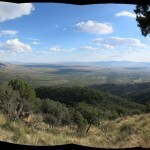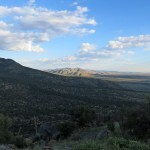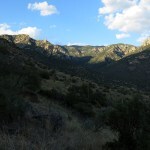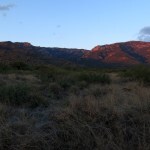Purgatory Ridge
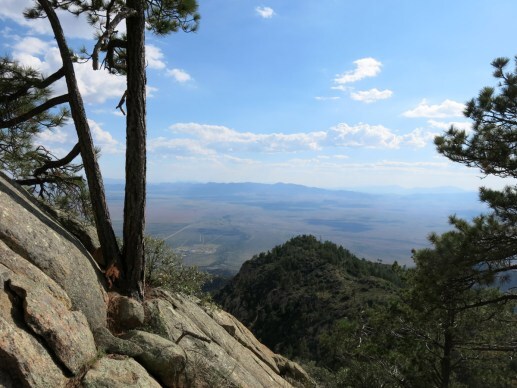
Expecting cooler temperatures even in the lower, hotter mountain ranges across the border in Arizona, I finally enjoyed an abundance of choices for this Sunday’s hike. But when I reviewed the latest trip reports from the range I was missing the most, I was surprised to find that a trail that had stopped me more than four years ago had been cleared last fall, by convicts from the nearby state prison.
This trail climbs a ridge above the spectacular canyon that I finally hiked last December, before our snowpack got too deep. Both hikes lead to the 9,000 foot crest, but the ridge trail is actually longer – my mapping app shows it at six miles one-way, 12 miles out and back, topping out at 9,341 feet, accumulating just over 4,000 feet of elevation gain.
It’s a two-and-a-half hour drive, but I would leave early and gain an hour crossing the state line, so I hoped to start at the same time I usually begin local hikes. The hike, and the mountain range, are scarred by the prison I have to pass and the giant astrophysical observatory that dominates the skyline, but the rock formations, habitat, and wildlife more than make up for those deficits.
It’s designated a “Wilderness Study Area”, so the entire range is open to cattle, but they have such lush forage at low elevation that they seldom venture onto the slopes.
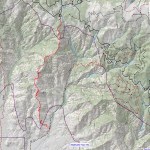
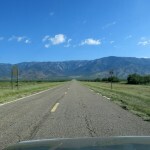
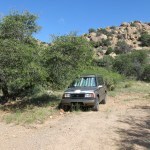
After our hot, dry summer, the perennial creek was running at an all-time low. Someone had stolen the trail sign, but as predicted, the trail itself was much easier to follow. I found fresh boot prints in the first hundred yards, but whoever had started out soon turned back. It appeared that I was the first on this trail since at least last spring, if not since last fall.
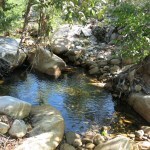
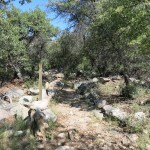
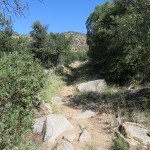
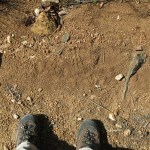
The trail climbs steeply to the ridge top, revealing a view of the big canyon on your right and the crest with its boxlike Large Binocular Telescope. The trail surface alternated between bare gravel, bedrock, and grass, and I was soon sweating and overheating, realizing that almost the entire route is exposed to the sun. Temperatures may have dropped across the region, but I’d picked the hottest trail possible.
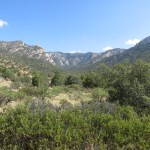
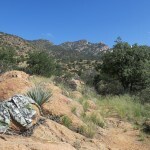
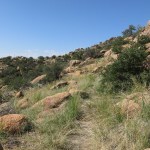
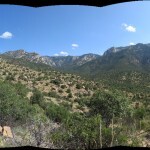
Not only was it hot, it was a continuous steep climb, at a minimum grade of 15 percent. I was still out of shape relative to previous years, resulting in a lot of stops to catch my breath and mop the sweat off my face. Thankfully the flies mostly left me alone up on that dry ridge.
In one mercifully shady stretch I found a plaque commemorating last year’s convict work party.
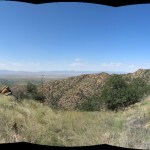
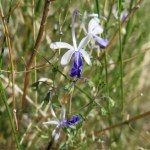
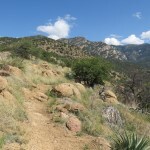
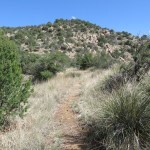
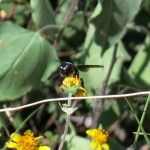
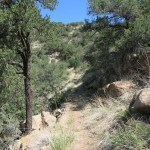
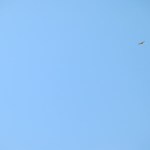
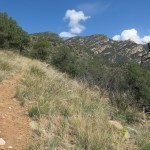
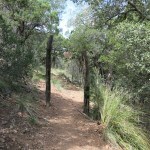
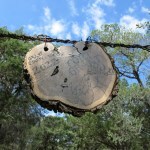
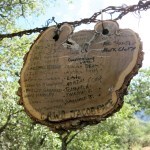
This outlying ridge ascends to the crest by means of a series of small peaks, and as the trail reaches the foot of each one, it becomes a seemingly interminable series of switchbacks. These make the climb possible, but they also make it longer!
Past the gate with the convict plaque, the trail got harder to follow – it seems like they focused their work on the lower third of the trail. As usual, I rejoiced when I first encountered ponderosa pines, but the rocky terrain prevented them from establishing enough forest cover to cool me off. The air temperature wasn’t bad – it was the solar heating that was killing me.
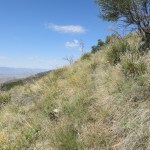
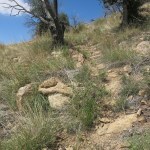
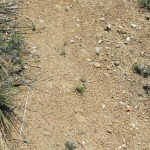
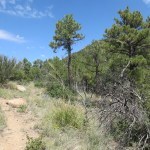
As each of the ridge’s intervening peaks loomed in front of me, I was hoping it would be the last one before the crest. But again and again, I was disappointed, and began wondering if I really had it in me to finish the climb.
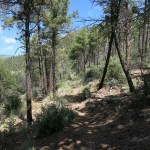
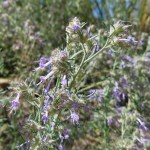
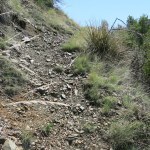
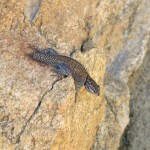
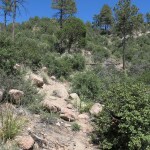
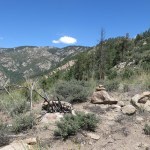
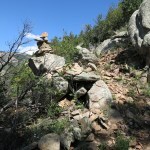
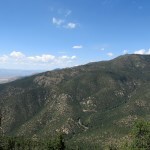
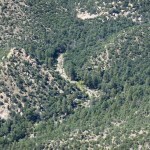
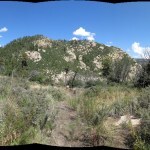
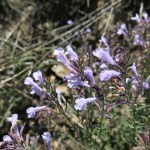
Finally, I found myself on the last series of switchbacks ascending to the crest. Here I had to climb over or around many deadfall logs and branches – it seemed that the convicts hadn’t made it this far, but someone had stuck little flags in the ground, many years ago, which usually indicates planned trail work that hasn’t actually taken place yet.
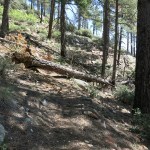
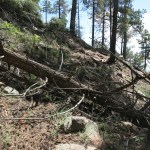
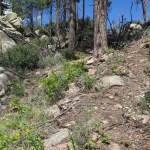
The last switchback unveiled the crest and the beginning of a burn scar colonized by aspen seedlings and thorny locust. But now, between me and the end of the trail, I faced a long, narrow bridge of rocky ground broken up into more little peaks. To cross this bridge I would have to ascend and descend each intervening peak. My map showed that after that hot, brutal climb, I still had almost a mile and a half of this to go. I couldn’t believe the entire trail is only six miles long!
The lizard population up here was exploding. It seemed like there were up to three lizards per square yard, including multiple species and sizes, and they were often hanging out together. I’d never seen anything like it.
The hike across the bridge involved even more obstacles and even steeper climbs, but I was determined to finish this damn hike, even if it meant limping back in the dark.
The Forest Service recommends hiking these trails downward from the crest, so I was watching every patch of bare ground for footprints. I still didn’t find any until I reached a fairly level stretch, where intact forest returned, only a quarter mile from the end. Apparently this trail is just too daunting for everyone but me.
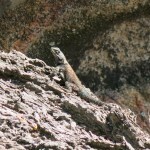
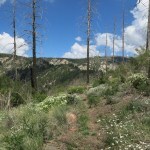
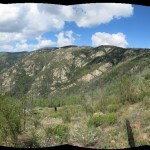
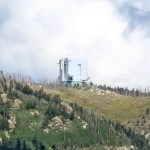
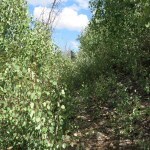
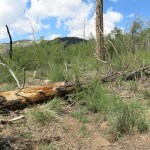
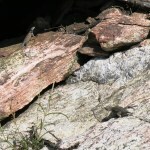
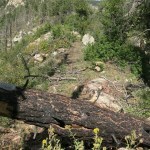
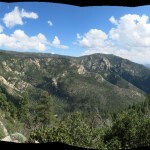
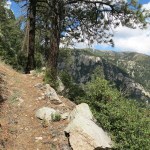
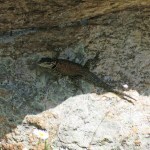
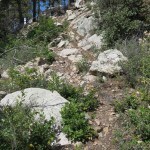
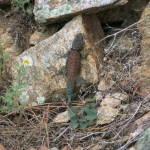
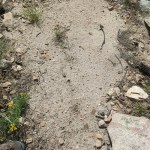
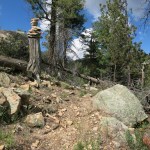
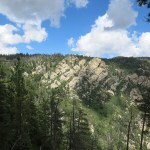
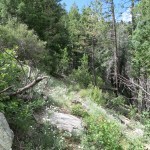
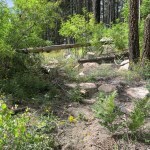
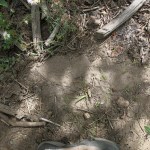
A lovely patch of spruce-fir forest awaited me at the end, but that last quarter mile still felt endless. The ascent had taken me more than five hours, and the Forest Service sign contradicted the distances shown on my mapping platform. I had my pick of total distances for this hike, ranging from twelve to fifteen miles! My best estimate was thirteen and a half.
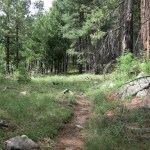
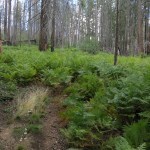
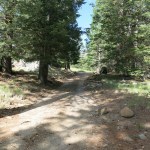
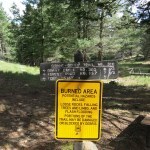
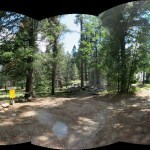
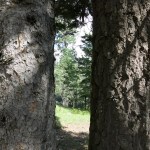
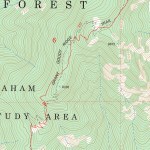
I didn’t have much time to rest at the top – my foot was hurting and it would only get worse. But that wasn’t the only thing slowing me down on the descent – my knees were complaining too, and I still had an ankle strain left over from a couple weeks ago. Combine a 4,000 foot descent with a steep, rocky trail, and you have a recipe for a lot of pain.
But if you could ignore the telescope above and the prison below, it remained a beautiful landscape, and once the pain pill took effect I was really glad I’d come.
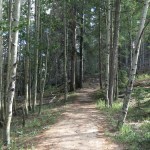
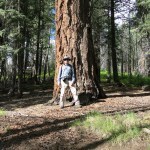
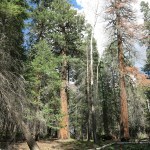
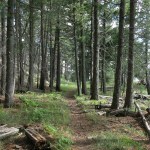
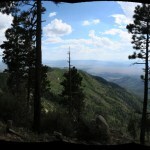
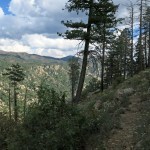
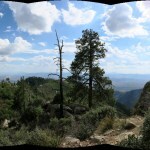
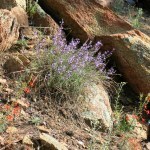
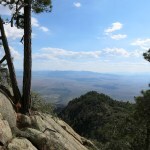
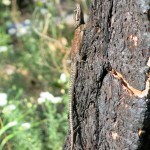
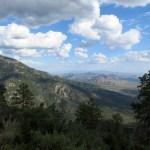
Moving as fast as I could, it took me just over three hours to get back to the vehicle. I’d booked a cheap motel room, but that was well over an hour away. A comedy of errors followed, delaying my dinner until 9 pm, and bedtime until 10. Today I drive home. Call me a masochist.
